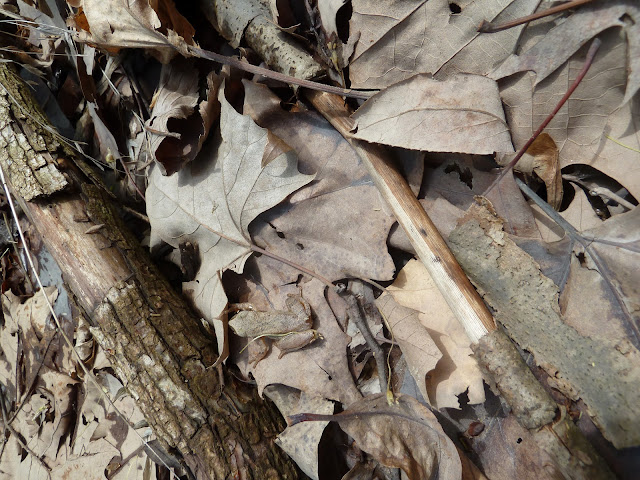 |
| Snow Trillium - Linda Williams |
 |
| Wake Robin |
______________________________
Snow Trillium - by Linda Williams
The end of March and the welcomed appearance of beloved spring ephemerals brings up some recent memories for me of helping to survey the rare-for-Missouri snow trillium, Trillium nivale.
On March 27, 2021 my good friend Susan Farrington, the MDC Natural History Biologist for the Ozark Region, asked me to accompany her to survey these special trilliums on some private property on the Jacks Fork River in Texas County. What a magnificent north-facing hillside on a bend in the river! The land partially borders the Ozark National Scenic Riverways. The owner is conservation-minded and proud of the rarity.
The location for the snow trillium here was in the MO Natural Heritage Program Database but the entry had not been updated since 1954 when several hundred plants were counted. When we arrived at the gravel bar on the opposite side, I used my spotting scope and could tell we were going to find plenty of plants. I was able to start counting them with my scope and photographing them with my 500mm lens while Susan launched her kayak to go to the other side and get a closer look. She didn’t go very far above the water since the hillside was so steep and it would have been a cold swim! We could tell the population included at least as many numbers as almost seven decades ago.
 Hepatica nobilis blooms in early spring - Linda Williams
Hepatica nobilis blooms in early spring - Linda Williams
Trillium nivale is generally thought of as a northern plant species. In MO it’s a glacial relict which means it’s a species adapted to colder climates, and it remained in select areas after the glaciers receded and the ice age ended. The glaciers 10,000 years ago did not extend as far south as the Lower Ozarks but the proximity of them still cooled areas in southern Missouri. Large cool, moist, north-facing bluffs are excellent places to find these types of plants. Snow trillium’s rank* in MO is listed as S3 and globally G4.
 |
| Snow trillium on a steep north-facing bluff |
On March 24, 2022 I was invited again to help survey a newly discovered area with snow trillium on a north-facing bluff in Shannon County above the Current River on Pioneer Forest land. About a dozen folks from MDC, The Nature Conservancy, National Park Service, and L-A-D Foundation took part in combing the steep hillside for plants. We spent several hours counting blooming (425) and non-blooming plants (626) and could have gone a few more hours! During recent years more groups have found more sites in similar habitats racking up similar numbers.
______________________________________________________
Editors note
* "Snow trillium’s rank* in MO is listed as S3 and globally G4."
This refers to the Missouri Species and Communities of Conservation Concern Checklist found at this link.
- S3 is Vulnerable in the state due to a restricted range, relatively few populations or occurrences, recent and widespread declines, or other factors making it vulnerable to extirpation.
- G4 is Apparently Secure: Uncommon but not rare; some cause for long-term concern due to declines or other factors.









.jpg)


